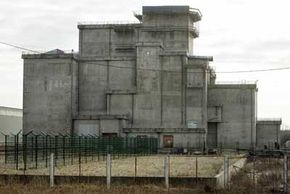Pros and Cons of Nuclear Power
What's nuclear power's biggest advantage? It doesn't depend on fossil fuels and isn't affected by fluctuating oil and gas prices. Coal and natural gas power plants emit carbon dioxide into the atmosphere, which contributes to climate change. With nuclear power plants, CO2 emissions are minimal, though uranium mining, construction of reactors, transportation of fuel and other parts of nuclear energy do generate greenhouse gases [source: Lenzen].
According to the Nuclear Energy Institute, the power produced by the world's nuclear plants would normally generate 2.2 billion tons (2 billion metric tons) of CO2 per year if they depended on fossil fuels. In fact, a properly functioning nuclear power plant actually releases less radioactivity into the atmosphere than a coal-fired power plant. That's because when coal is burned for electricity, fly ash (which contains very concentrated amounts of uranium and thorium) is released. This fly ash has 100 times more radioactivity than the radioactivity released by a nuclear power plant producing the same amount of energy [source: Hvistendahl]. Plus, nuclear energy comes with a far lighter fuel requirement. Nuclear fission produces roughly a million times more energy per unit weight than fossil fuel [source: Helman].
Advertisement
But there are many negatives as well. Historically, mining and purifying uranium hasn't been a very clean process. Even transporting nuclear fuel to and from plants poses a contamination risk. And once the fuel is spent, you can't just throw it in the city dump. It's still radioactive and exposure to this waste can cause radiation sickness, cancer or even death, depending on how much radiation you absorb [source: Rettner]. According to the U.S. Government Accountability Office, the U.S. has accumulated 88,185 tons (80,000 metric tons ) of nuclear waste generated by power plants, most of which was still stored at company sites, as the federal government struggles to come up with a better solution.
And as if this weren't bad enough, nuclear power plants produce a great deal of low-level radioactive waste in the form of shoe covers, wiping rags, equipment and other materials [source: NRC].
